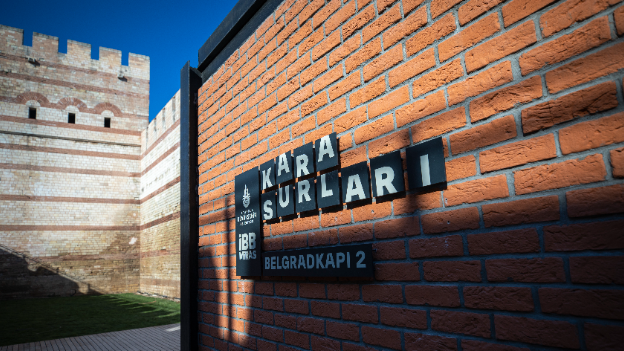The Kara Surları (Land Walls), one of Istanbul’s historical legacies that have withstood centuries, are being brought back to life through the meticulous efforts of İBB Miras. A fresh breath has now been added to this unique wall line: the Belgradkapı Library, located at the heart of a living space intertwined with history and culture.
Built in the 5th century by the Eastern Roman Emperor Theodosius II, the Kara Surları remained neglected for a long time until they were brought back to light through extensive restoration work initiated in 2020 by the İBB Miras teams under the Istanbul Metropolitan Municipality’s Department of Urban History and Promotion.
Following the restoration at Mevlanakapı Police Station, the works completed at Belgradkapı have transformed this special stop along the 7.2-kilometer section of the wall line into a venue designed to host a variety of cultural events, from concerts and film screenings to open-air activities and talks.
Located within the Belgradkapı Visitor Center, the Kara Surları Belgradkapı Library opened its doors on February 24, 2024.
The library, which does not offer lending services, welcomes its readers between 10:00 and 18:00.
About the History of Belgradkapı
Belgradkapı, one of the main entrance gates, is situated between towers 22 and 23 near Yedikule. In Eastern Roman sources, the structure is referred to as the Xylokerkos Gate, meaning "wooden circus." It is estimated that Belgradkapı was the most significant entrance along the Theodosius wall line until the construction of the Golden Gate.
After the conquest of Istanbul, the gate was known as the “Closed Gate” and is believed to have been largely kept shut during the Ottoman period. Reopened in 1886, the gate was named “Belgrad Kapısı” (Belgrad Gate). The reopening of the gate was influenced by the need to provide access to the Balıklı Greek Hospital. Some sources suggest that the gate came to be called Belgradkapı due to its association with the neighborhood behind it during the Ottoman era. Another perspective on the origin of the name is that it was named Belgradkapı after people brought from Belgrade following its conquest in the 16th century were settled in this area.
Like the rest of the walls, Belgradkapı also suffered damage from earthquakes over various periods. It is known that the upper parts of the towers collapsed during the 1894 earthquake. By 1969, the towers had no roofs and were damaged up to half their height. The gate was last restored between 1986 and 1987 through a collaboration between the Istanbul Metropolitan Municipality and the Taç Foundation.
Capacity: 168 m², 60 people
Address: Mevlanakapı, Kale Dibi Sk. No:14, Fatih
